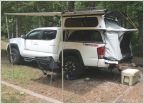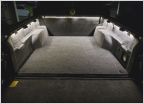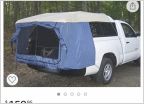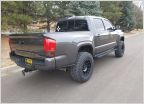-
Welcome to Tacoma World!
You are currently viewing as a guest! To get full-access, you need to register for a FREE account.
As a registered member, you’ll be able to:- Participate in all Tacoma discussion topics
- Communicate privately with other Tacoma owners from around the world
- Post your own photos in our Members Gallery
- Access all special features of the site
Driving a Tacoma around the world
Discussion in '3rd Gen. Tacomas (2016-2023)' started by Round the world, Jan 4, 2019.
Page 74 of 89
Page 74 of 89


 Viair 400p hardmount
Viair 400p hardmount Suggestions needed! Sleeping platform and solar power setup.
Suggestions needed! Sleeping platform and solar power setup. Which Bed Lights?
Which Bed Lights? Camper Shell Tent for 5ft. bed
Camper Shell Tent for 5ft. bed Afe filter #
Afe filter # Running Boards, What fits?
Running Boards, What fits?



















